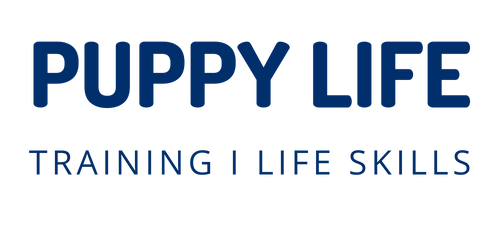Dogs (and especially puppies) are busy bees. While management is central to guiding good choices, growing good habits with food toys can be a saving grace for tired caregivers.

Keeping puppies constantly entertained can be quite a task. I often refer to ‘food toy addictions’ or say things like ‘try to build a food toy habit’. I’ve also heard the same idea described as ‘one-player games’ or ‘colouring-in books’ (probably more like ‘join the dots’).
But it’s more than this. I’ve found what helps is when puppies can predict when they are going to do something relaxing. Simply put, this means building food toys into a consistent daily routine.
Consider the time of day a food toy is presented. And think about what just precedes it. It’s also useful to consider where the food toy is delivered, for example on a specific mat that’s always in the same spot. Puppy learns, ‘after my morning sniff walk, I go to my mat and I always get a long-lasting chew, carrot, Kong, Lickmat, Wobbler’, or whatever is it. (The item doesn’t have to be highly calorific. Using some of your dog’s daily allowance, with a few added extras is generally best.)
Food toys elicit natural behaviours. Chewing and licking are supremely calming for dogs of any age, so these activities can help to bridge the gap between the super-stimulating outside world and settling down indoors.
They can be great strategic tools for teaching and supporting the development of new skills too. Enriching food toys can be used for things like creating ‘crate love’ or building up alone time. I’ve used them to my advantage to avoid having a busy puppy around when getting dressed in the morning or cooking dinner. All in all, without being overly dramatic, I don’t think I’d be around to tell the tale without them.
